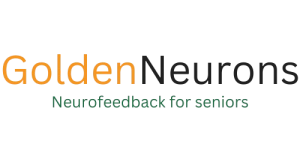What is Neurofeedback?
Benefits of Neurofeedback for ADD/ADHD
So, you’ve got the scoop on what neurofeedback is and how it’s different from traditional ADHD treatments. Now, let’s talk about the good stuff—the benefits. Why are people with ADD/ADHD turning to neurofeedback? Here are a few reasons that are as appealing as a double-shot espresso on a Monday morning.
1. Sharpened Focus: Imagine if your brain had its own set of glasses, making everything clear and sharp. Neurofeedback can help fine-tune your brain’s focus, reducing those moments when your mind feels like it’s in a fog. It’s like going from old-school TV static to high-definition clarity in your day-to-day tasks.
2. Smoother Behavior: For the young (and young at heart) dealing with ADHD, impulsive actions and a hyperactive throttle can be real challenges. Neurofeedback has been like a friendly guide, helping to dial down the impulsiveness and put a smoother, more controlled drive into behavior. It’s not about changing who you are; it’s about enhancing your ability to navigate life’s traffic without unnecessary detours.
3. Enhanced Emotional Regulation: Ever feel like your emotions are a rollercoaster, and you’re not strapped in? Neurofeedback therapy can help stabilize that ride, making emotional ups and downs more manageable. It teaches your brain to maintain a more balanced state, reducing those sudden drops and unwanted loops in mood that can catch you off guard.
Neurofeedback for ADHD in Adults vs. Children: Tailoring Treatment
Across Ages
Neurofeedback for Adults with ADHD
Neurofeedback for Children with ADHD
Versatility and Effectiveness Across Age Groups
Neurofeedback Training: What to Expect
Embarking on neurofeedback training for ADHD can feel like stepping into a new world. Here’s a step-by-step guide to demystify the process:
Initial Assessment: Your journey begins with an assessment to understand your or your loved one’s specific ADHD symptoms and goals for the therapy.
Setup: During sessions, you’ll wear sensors on your scalp. These sensors are non-invasive and painless—they simply read your brain’s electrical activity.
The Training Session: You’ll watch a screen that displays a game, movie, or other visual tasks. Your brain’s activity influences what happens on the screen. For example, when your brain exhibits patterns associated with focus, the movie plays smoothly. If your attention wavers, the screen might pause or change, providing real-time feedback.
Adjustments: The software adjusts in real-time to your brain’s activity, ensuring the training is neither too easy nor too hard, which helps optimize learning.
Progress Tracking: Each session’s data is collected to track progress and make necessary adjustments to the training protocol.
FAQs About Neurofeedback Therapy for ADHD
How long does neurofeedback therapy take to show results? While individual experiences vary, many people begin to notice improvements within 10 to 20 sessions. Consistency is key to achieving lasting changes.
What are the expected outcomes of neurofeedback therapy for ADHD? Common outcomes include improved focus, attention, emotional regulation, and a reduction in hyperactive and impulsive behaviors. It’s a powerful tool for enhancing overall cognitive function.
Can neurofeedback replace ADHD medication? For some, neurofeedback training reduces the need for medication by managing symptoms effectively. However, decisions about medication should always be made with a healthcare professional.
Conclusion
Neurofeedback therapy offers a promising, non-medication approach to managing ADD/ADHD. By harnessing the power of brain training, individuals can achieve significant improvements in focus, behavior, and emotional regulation. This innovative therapy is adaptable, making it suitable for both adults and children seeking to overcome the challenges of ADHD.
If you or a loved one are navigating the complexities of ADHD, neurofeedback could be the key to unlocking a more focused and balanced life. It’s a journey of personal growth and cognitive enhancement that empowers you to take control of ADHD symptoms without relying solely on medication.



